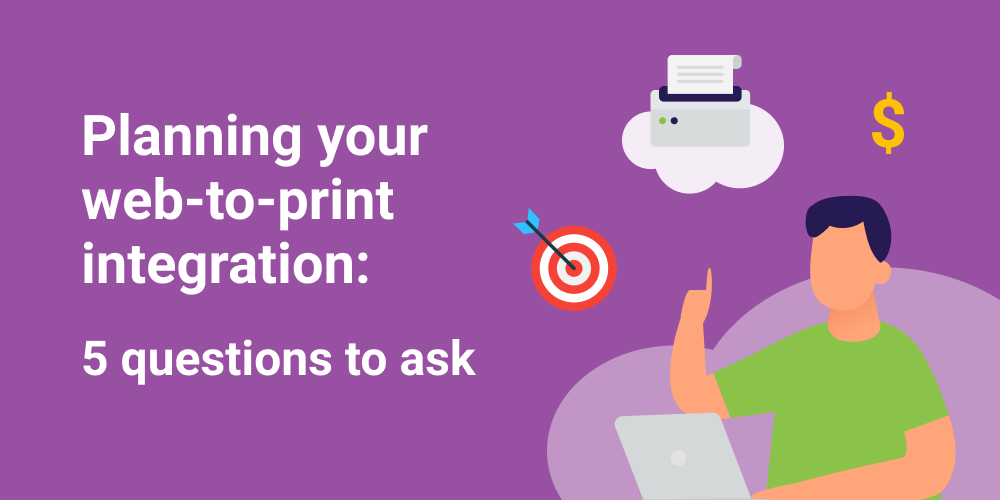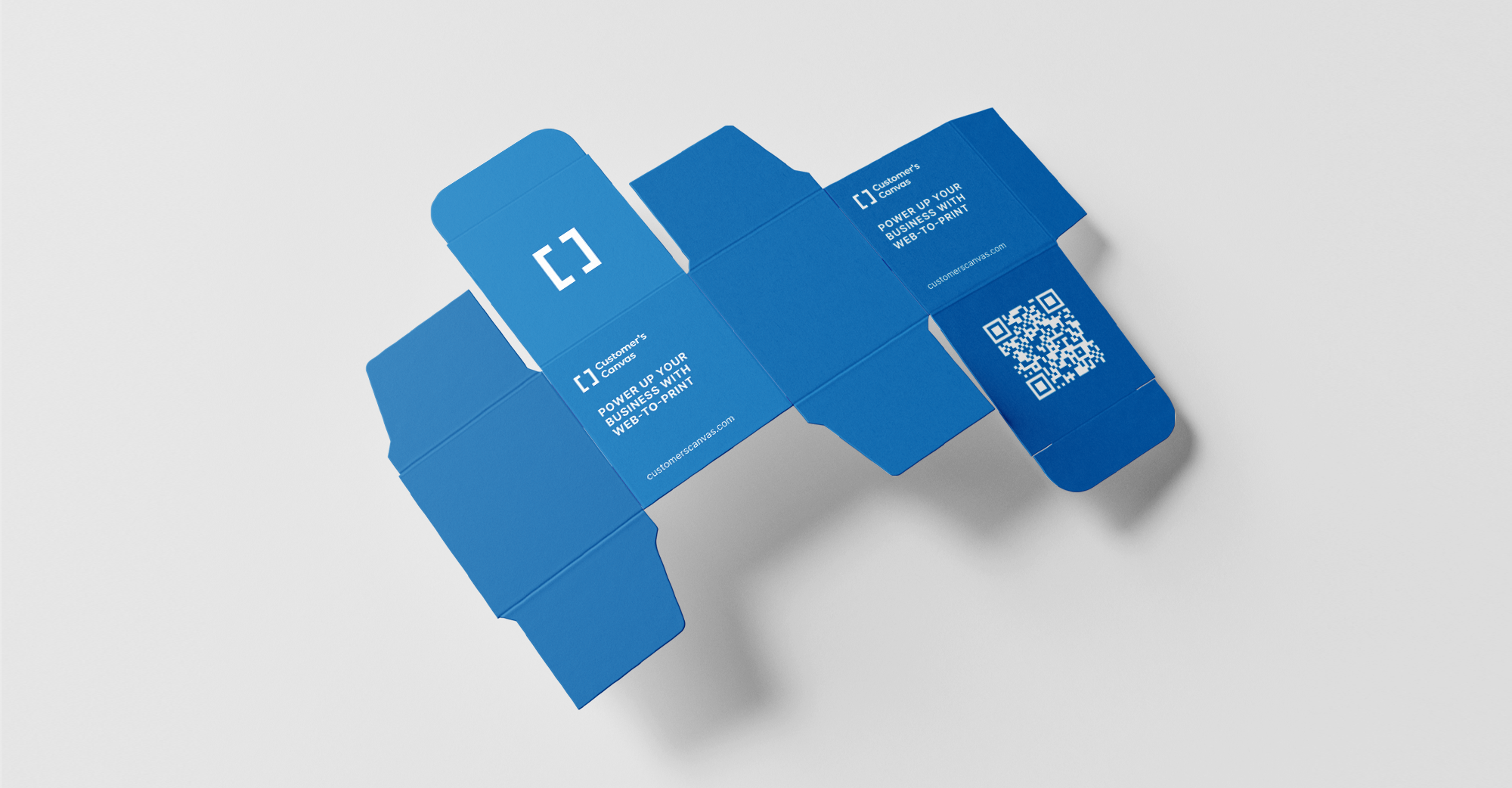Before launching a web-to-print integration project or reevaluating their current web-to-print system, one should clearly understand their motives for doing so. This will help make it clear what kind of web-to-print system is required, and what role W2P will play in the company’s long-term strategy.
Here are some questions that might help to develop such an understanding:
- Why do I need web-to-print
- What customers do I plan to serve?
- Where does web-to-print fit into my current workflows?
- What kinds of products and ordering workflows would I like to implement?
- What resources will I need?
Why exactly do I need web-to-print?
That might seem like an easy question to answer, but it really isn’t. For example, your goals might sound like this:
- To save employees’ time by automating prepress processe
- Expand your business to new markets and audiences
- Increase the loyalty of your clients by providing easy, fast, and high-quality service
- Improve the financial results of your business
Setting up goals will make it much easier to evaluate your web-to-print strategy and measure the results.
The next question that you might want to ask is:
What customers do I plan to serve?
Who will be the end-user of your ordering workflow? The main customer segments to target are B2B, B2C, or both.
Although the line between B2B and B2C is becoming increasingly blurry, these are still different segments. A clear understanding of your target audience and its needs is the key to a successful web-to-print integration project.
For example, if you work with B2B clients, some of their top requirements will be private storefronts and advanced templates support capable of maintaining consistent branding. These clients also appreciate a quick, convenient approval process that can prevent costly mistakes in large print runs.
B2C clients prefer a user-friendly interface to advanced functionality, as well as other useful tools that will increase your conversion rates like 3D previews, image galleries, and other features.
Where does web-to-print fit into my current workflows?
If you’re considering web-to-print, it’s likely that you already have some sort of automation infrastructure in your company. It may be a simple website or a kind of MIS system that you already use to increase the efficiency of your business. In either case, web-to-print is only a part of the automation infrastructure, and connecting all of these elements end-to-end is essential to maximize the ROI. Choosing a web-to-print system that can communicate with other software via API can expand your flexibility significantly in terms of building an automated system that fits your business best.
Planning for how your business workflows will evolve after you introduce web-to-print to your automation infrastructure – how ordering processes will change, new ways of communicating with clients, etc. – is key to maximizing the benefits of integration. Also, it wouldn’t hurt to find ways to reduce the pain of a new integration. For instance, you could save resources on creating a new template library by importing it to the new web-to-print system.
You can either fit the software to the processes or fit the processes to the software. Planning your web-to-print integration is a good time to reevaluate your current workflows and see if they need to evolve to keep your business successful.
What kinds of products and ordering workflows would I like to implement?
Knowing what products you want to add to your web-to-print integration is important because the whole idea of web-to-print is to enable online product ordering. It is better to plan before the implementation since different products require different ordering processes, which might be a factor when choosing the web-to-print software.
Although you may start with one or two products to begin with, you need to consider your long-term business strategy to avoid the risk of needing another software change in the future due to your current setup’s limitations.
Once you have decided which products you want to include in your web-to-print solution, the next step is planning how exactly you want your customers to order them.
Some options are:
- Accepting uploads of print-ready files
- Form-based editing
- WYSIWYG editor
- Adding images and text automatically from a database
Selecting one, or a combination of a few options will help outline the future growth of your online storefronts. It will also make it easier to create terms of reference for the integration team. Additional services like finishing options or variable data printing are also features to consider adding as they give clients more choice while also serving as a way to increase the average order.
What resources do I need?
Human resources
No matter how automated the process is, it still relies on human beings. Human resources are the major factor that will have a large impact on how your web-to-print integration will be implemented and how it will be handled later on. You will need people to:
- Develop the web-to-print solution – it can be an in-house development team or outsourced to a third-party.
- Maintain the web-to-print solution – people who use the web-to-print solution daily, such as accounting managers, designers, or system administrators. Could you do with the existing staff or should you hire specific employees? This is a question that interweaves with the question “where does web-to-print fit into my current workflows” that we have looked at previously.
Financial resources
Several factors influence the funds that you can spend on a web-to-print system.
What are your long-term web-to-print goals? What financial result can you achieve by reaching those goals? They may be achieved by a combination of:
- Increasing the efficiency and decreasing the transactional costs for receiving orders
- New sales channels, like an online storefront.
- Increasing the average order by offering additional services.
Investing in web-to-print has to be reasonable – nobody wants to spend thousands of dollars on just a nice-looking website. In the face of such a major expense, some proper accounting needs to be done to make sure it’s a feasible option. It’s okay to think positively and expect an increase in revenue, but the numbers still have to make sense.
Planning a web-to-print integration that will work for your company
No matter what goals you want to achieve with web-to-print integration, the main idea is that this innovation should add value to your business. The best way to guarantee that added value is to plan your integration before you start writing checks. Honest and detailed answers to the questions we’ve discussed above will not only help you plan the integration well but also evaluate success after the launch.


